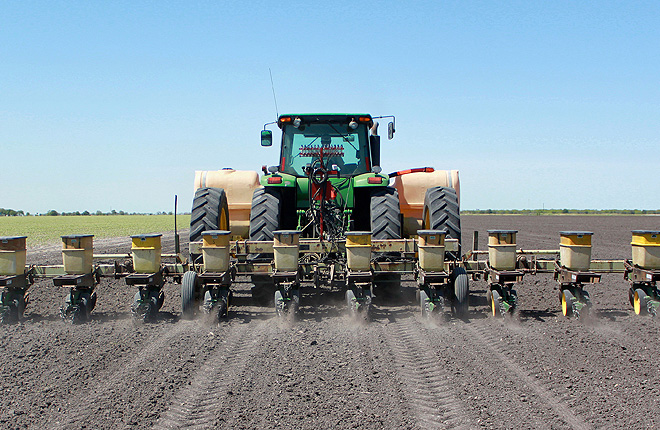Forum: Sensing What Plants and Animals Need
Precision agriculture is a farm management concept sometimes referred to as “satellite farming” or “site-specific crop management.” In theory, data is collected about farm operations, and that data helps farmers make the best management decisions for their farms.
But data gathering does not equal decision support.
We have had data for a long time, but we haven’t always known how to use it. For example, at the beginning of the precision agriculture movement, we had maps that showed how yields varied across fields and farms. But no one knew how best to use yield-map data to guide management. Simply putting more fertilizer on low-yielding areas of a field didn’t increase yields.
Research into why that approach didn’t work revealed many interacting factors that determine yield, including soil water content, texture, and salinity. This led to research on models of plant growth and yield that improved understanding of these factors, helped formulate more detailed research questions, and led to successful data-driven management solutions. Data-driven management decisions are now also being applied to animal management, using data about animal feed, body mass change, carbon dioxide emission, and oxygen consumption to more efficiently manage animal production.
A fundamental question is, What systems are in play that determine how management affects yields and environmental outcomes? At the Agricultural Research Service (ARS), current efforts like the Long-Term Agroecosystem Research network are adding to our understanding of both long-term and short-term responses to management methods. That understanding is the basis for decision-support systems guiding precision agriculture. Decision-support systems—essentially software and hardware—are the essential links between data gathering and making sound management decisions.
Sensors are used in many precision agriculture innovations today. For example, some plant sensors provide data on a plant’s nitrogen status by revealing the chlorophyll content of leaves. Such sensors may be deployed in satellite, aerial, or implement-carried versions. The data from aerial or implement-carried sensors can be used for on-the-go, variable-rate fertilizer application. These systems allow true “4-R” nutrient application – Right place, Right time, Right amount, and Right kind.
Similarly, improved sensors have resulted in more accurate indications of crop water stress and plant water use. Both of these measures may be used to achieve the three R’s of precision irrigation – Right place, Right amount, and Right time.
ARS has developed other kinds of sensing systems now in use:
-
Wireless plant-canopy-temperature sensors that are mounted on center-pivot irrigation system. The sensors feed data into a decision-support system built into the center-pivot control panel to guide variable-rate irrigation. Applicable to the 56 percent of U.S. irrigated lands covered by moving irrigation systems, this decision-support system is poised to see wide application and has already been shown to increase yield per unit of water used and pay for itself quickly.
-
Sensors that generate data on soil water content and salinity. This data guides water and soil management decisions for both agriculture and environmental management.
-
Methods whereby data from multiple satellites are fused to allow daily estimates of crop water use in areas that are 100 feet by 100 feet. The small size and daily estimates are often enough to guide precision irrigation in most irrigated fields. The technology, called “pixelated irrigation management,” has been demonstrated in vineyards in California’s Napa Valley but has broad applicability.
Precision agriculture is based on data, but it is the combined improvements in sensors, data communications, and decision-support systems that are driving the modern world of precision agriculture. Sensors are now guiding management activities like fruit tree thinning and harvesting, pesticide spraying, nutrient application, and irrigation—all with great precision.
American producers are seeing the practical applications of ARS’s research on complex agroecosystems coupled with advanced engineering and sensor network development. ARS combines its strong research program with a system for developing commercially viable products. Through cooperative research and development agreements between ARS and commercial partners, coupled with Small Business Innovative Research Grants that promote product development and commercialization, we have an effective way to bring the products of ARS research to American producers and the public.
Steve Evett
Acting Deputy Administrator
Natural Resources and Sustainable Agricultural Systems
Agricultural Research Service
Beltsville, Maryland
Key Facts
- Data collection is an essential part of precision agriculture.
- ARS-developed sensors provide data on plant health, water use, and soil conditions.
- Decision-support systems are essential links between data and good management decisions.
- ARS partners with companies to make these technologies available to producers.
Full Story







